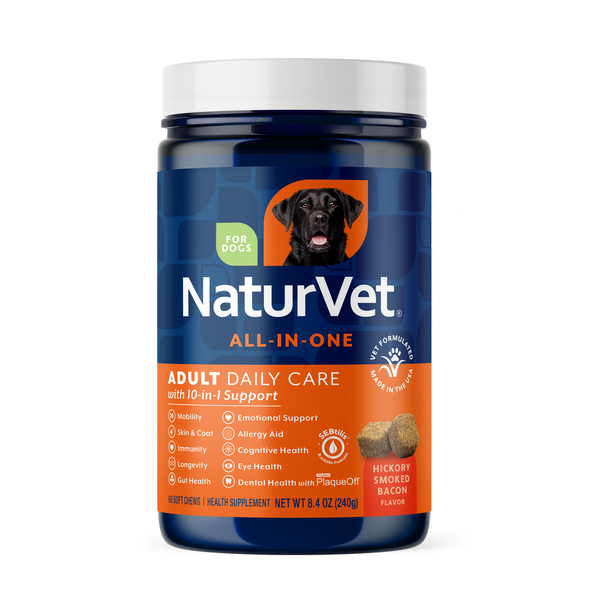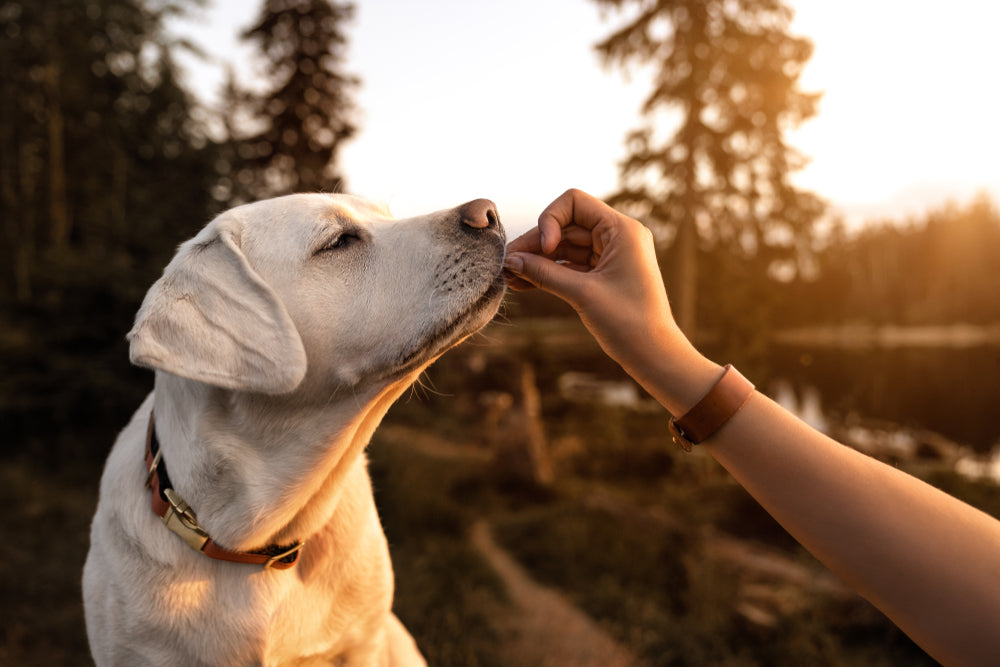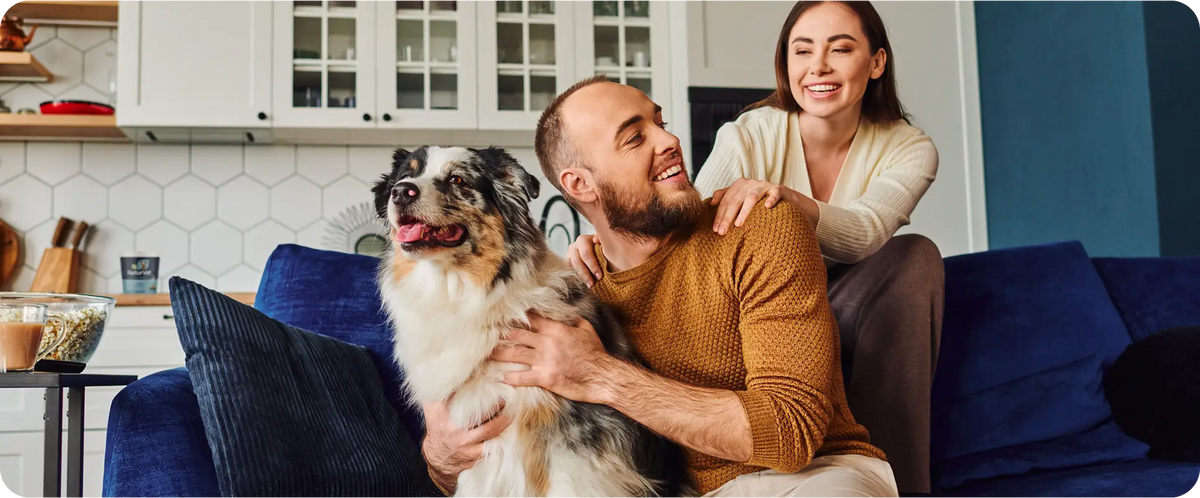Dog Intestinal Blockage
Chris Vanderhoof, DVM, MPH
Dogs love to eat. But this doesn’t always mean that they’re enjoying their food or favorite treats and may eat lots of things they shouldn’t. It’s truly amazing what some dogs are able to pass that they shouldn’t have eaten in the first place. There are many complexities to dog intestinal blockage.
But there are occasions where a foreign object, meaning something that isn’t food or cannot get broken down naturally by the body, gets lodged in a part of the digestive tract. Either because of its shape or size, the intestinal tract is unable to get it to move further down through its various twists and turns.
If something becomes lodged and the body can’t move it forward, signs of illness will develop and these signs become progressively more serious if not addressed.
In this article you’ll learn how that can occur, how to recognize signs of this serious medical concern, what you can do at home, and when to seek veterinary care.
Dog Bowel Obstruction Symptoms
Symptoms of intestinal blockage in dogs may occur right at the outset, or can be delayed, with other more minor signs occurring first.
If a dog ingests a tennis ball or a pork bone and it immediately gets lodged an hour or two after being eaten, signs of the blockage may occur right away.
However, if something smaller or more pliable and soft is ingested, like a sock or other article of clothing, a blockage may occur more slowly as the object may be able to move partially down the intestinal tract and gradually get lodged. In this case, more subtle signs may be seen at first and then gradually become more severe as the blockage develops.
To help recognize different things you might see, we’ll divide signs into what we might see early and what might be seen later on.
Early Symptoms of Intestinal Blockage in Dogs
When a foreign object is first ingested, an acute or sudden onset of vomiting is common, whether frequent or occasional, depending on the object and where it is. Holding down food may be variable. Some dogs may be immediately put off by food with others just not eating as much. Some of that food may make its way through, or a dog may always vomit a meal back up, even a couple of hours later.
A pup’s energy may still be great at first and they’ll still be doing many of their normal things. Even if vomiting occurs or appetite decreases, energy and willingness to engage in normal activities may still appear okay.
Late Symptoms of Intestinal Blockage in Dogs
As an object becomes firmly lodged in the intestinal tract and as inflammation, irritation, and discomfort around that area progresses, more concerning symptoms will start to be seen.
Activity level declines. This can be from dehydration from continued vomiting and/or inability to hold food down. In many cases of a full blockage, water cannot be held down either. Appetite and interest in food will usually disappear.
Vomiting may continue after appetite disappears, but since no food is present anymore, a yellow or green liquid from the small intestine called bile will come up instead. In some cases later in an intestinal blockage, fluid that is vomited up may be brown, discolored, and have a very foul odor.
Dogs can develop signs of abdominal pain, which can appear as tensing, yelping, or even growling and aggressive behavior if that area is touched or when a dog is picked up.
Eventually, a full blockage will lead to tissue compromise in the intestines, causing infection and fever. Heart rate will become very rapid. This can be from pain as well as infection and inflammation.
Dogs may become more withdrawn, looking for quiet places to be alone. This can be a very concerning behavioral change, especially for a dog that is usually very sociable.
Progression into these types of signs is always concerning and requires a veterinary exam as soon as possible. If signs and symptoms are not recognized or go on too long, dogs can die from the intestinal tissue compromise and secondary infection.
Dog Intestinal Blockage Timeline
The time it takes for these symptoms to occur can be very variable depending on what a pup actually ate. Larger objects, like big rope toys, large bones, and tennis balls may lodge quickly where signs of a blockage will be seen within just a couple hours. Vomiting is usually more profuse at first and food can’t be held down.
But smaller objects, like clothing, underwear, wine bottle corks, pieces of corn cob, or bits of stuffing from a toy or bedding may take longer. Partial obstructions can occur where some food can move around an object or where the object makes its way pretty far through the intestinal tract before finally getting lodged. In these situations, significant signs of a blockage may not be apparent for 24 hours or more, but less severe signs may be present. Partial bowel obstruction symptoms can include intermittent vomiting, waxing/waning appetite and energy, and diarrhea.
How Long Can a Foreign Object Stay in a Dog’s Stomach?
The stomach has a normal ability to distend pretty far to accommodate what’s inside it. Intestines have this ability too, but to a much lower degree.
However, any foreign object in the stomach is also going to cause signs of illness like vomiting and sometimes decrease in appetite. The question really becomes how long the object will stay in the stomach before moving into the intestinal tract.
Foreign objects may pass into the intestinal tract right away but can also hang out in the stomach for a pretty long time. If an object is too large to easily pass through the muscular sphincter of the stomach into the intestinal tract, it may even remain in the stomach for weeks to months, to years.
Some dogs with a foreign object in the stomach may show intermittent signs of vomiting but then be fine for a while. This is usually because the object is not causing a full blockage, so food is able to go around it. Once in a while, the stomach becomes unhappy about it being there and a vomiting event occurs. These dogs may appear very normal most of the time, which can make it hard to diagnose.
Dog Blockage Home Treatment
If a true intestinal blockage is present, there is no home care remedy that will work. If a foreign object is lodged and cannot move forward (or backward and get vomited back out), then surgical removal of the object is the only remaining option.
But this doesn’t mean that if mild or early signs are seen, that there aren’t some steps you can take at home and there are some great preventive tips to reduce the risk of your dog ingesting a foreign body.
If vomiting is seen, as long as signs of lethargy or poor appetite are not present, it can be okay for some at-home care for 12-24 hours as long as nothing worsens. Typically, you want to give the stomach time to rest by avoiding food for at least a 12 hour stretch. When providing water,make sure to allow only a couple cups at a time, depending on your pup’s size, to avoid putting too much water weight on the stomach.
It’s a natural instinct to want to feed your dog right away after vomiting is seen or to provide a lot of water. But if done too early and in too much volume, this can actually irritate the stomach and cause more vomiting.
When you do try reintroducing food, it’s most helpful to feed something bland and highly digestible, like boiled chicken and white rice (as long as your pup doesn’t have a known chicken protein allergy). Feeding in smaller meals, about ¼ of what you would normally feed at first, combined with more frequent feeding 3-4 times during the day, can help.
If you are concerned that your dog may have ingested something inappropriate, but no signs of illness have yet occurred, many veterinarians will advise monitoring. Sometimes that missing sock or that chewed up squeaker toy will make its way through just fine, especially in a larger dog. Exceptions to this would include any potential toxins or medication mishaps, where early intervention is very important.
To help something pass through, bulk feeding with something high in soluble fiber that forms a bulky gel like bread, coupled with plenty of water and more frequent exercise may be advised. But because this can aggravate things in some cases and make the results of diagnostic tests like x-rays or ultrasound less clear, it’s always best to call your vet hospital and ask what would be recommended.
Dog Intestinal Blockage Prevention
Because a dog intestinal blockage is so serious and can incur a lot of unexpected vet bill costs, focusing on prevention with these 5 tips can be really helpful.
Avoid feeding from the table
Not all table food is bad for dogs (green veggies are great) but the idea here is that feeding from the table can lower inhibitions. Your dog will learn to associate the dinner table with yummy treats and will constantly return to investigate this area for anything left behind. That’s when leftover bones, corn cobs, or even the wine cork forgotten on the table turn into major risks.
Teach “drop it” or a similar command
Teaching a command like this if you catch your dog eating something indoors or outside that they shouldn’t can make all the difference. You can start out by using a large rubber toy that your dog can hold in their mouth but not swallow and use small training treats as a reward when the object is released.
Take extra steps to keep the house tidy
If your pup has a penchant for eating inappropriate things, especially small toys left out by the kids, or clothing like socks and underwear, sometimes the best thing you can do is keep things as clean as possible and keep certain items well out of reach. For bigger dogs, this can also mean tabletops and counters.
Involve the family
If you’re the only person in the family being vigilant and working hard to avoid a foreign body ingestion, your efforts will be in vain when you’re out or in a different area of the home from your dog. Have a family meeting to go over clear rules with clearing the table, cleaning up after activities, and making sure access to certain places in the home is restricted.
Watch your dog very closely on walks
When you’re in an environment where you can’t control what’s there, sometimes the best thing you can do is always be on the lookout for hazards. Trash dropped or objects tossed out of vehicles can present tempting items your dog will want to sniff out. Dogs can eat something in a split second, and something can easily disappear in the 2-3 seconds you glanced at that text on your phone.
When to Seek Veterinary Care
Many well-meaning pet parents may elect to “wait it out” if their dog starts vomiting, hoping it will resolve itself. In some cases, this may turn out okay if the cause of the vomiting was not due to a solid foreign object, but just something the pup ate that the stomach didn’t like.
But because we don’t often know what caused the vomiting in the first place and because a foreign object that could cause a blockage is always a possibility, you should have objective parameters of what to look for to get your pup checked out.
Generally, if your dog exhibits more than one episode of vomiting in 12 hours, especially on an empty stomach, it’s best to have a veterinary exam performed. Anytime vomiting is coupled with lethargy or a decrease in appetite, even if signs just started, it’s better to err on the safe side than to wait.
Common tests performed at the vet include x-rays, ultrasound, and bloodwork to help assess state of health as well as determine if a foreign object or intestinal blockage is present and the best course of action to take.
In a best case scenario, your dog’s exam will be normal and your vet may provide some simple treatments and make further recommendations for care at home. But if there is concern and an intestinal blockage is suspected or diagnosed, you’ll be glad this was found earlier rather than later.
Join Our Pack
Follow us @NaturVet on social media to fill us in on tips we might have missed. And, check out the rest of NaturVet.com. We’ll keep you up to date on all our latest pet resources, supplements, tips and tricks, and more – everything you need to be the best pet parent possible!























